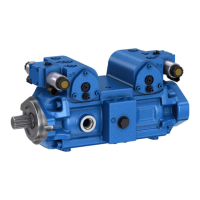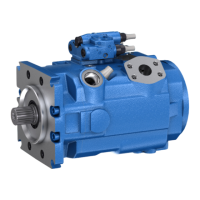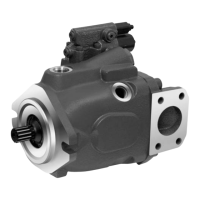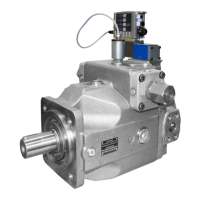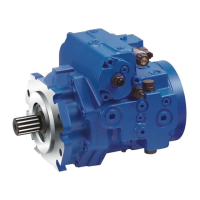BoschRexrothAG, RE91405-01-B/2021-05-21
40/52 A2FO series 70 | Commissioning
The axial piston unit is tested for functional capability and performance before
delivery according to the technical data. During commissioning, make sure the
axial piston unit was installed in the machine/system as intended.
▶ After starting the drive motor, check in particular the specified pressures,
e.g.working pressure and case pressure.
▶ Perform aleak test without and with load prior to normal operation.
▶ If necessary, remove the pressure gage and plug the ports with the specified
threaded plugs.
8�2 Running-in phase
NOTICE
Property damage due to insufficient viscosity!
Elevated hydraulic fluid temperature may excessively reduce viscosity and damage
the product!
▶ Monitor the operating temperature during the running-in phase, e.g.by measuring
the leakage temperature.
▶ Reduce the loading (pressure, rotational speed) of the axial piston unit if
unacceptable operating temperatures and/or viscosities occur.
▶ Excessively high operating temperatures indicate faults that have to be analyzed
and eliminated.
The bearings and sliding surfaces are subject to arunning-in phase. The increased
friction at the start of the running-in phase results in increased heat development
which decreases with increasing operating hours. The mechanical-hydraulic efficiency
is also greater until the running-in phase of about 10 operating hours is concluded.
To ensure that contamination in the hydraulic system does not damage the
axial piston unit, BoschRexroth recommends the following procedure after the
running-in phase:
▶ After the running-in phase, have ahydraulic fluid sample analyzed for the required
cleanliness level.
▶ Change the hydraulic fluid if the required cleanliness level is not reached.
If alaboratory test is not carried out after the running-in phase, it is recommended
to change the hydraulic fluid.
8�3 Recommissioning after standstill
Depending on the installation conditions and ambient conditions, changes may occur
in the hydraulic system which make recommissioning necessary.
The following criteria may make recommissioning necessary:
• Air and/or water in the hydraulic system
• Old hydraulic fluid
• Other contamination
▶ Before recommissioning, proceed as described in chapter8.1
"Initial commissioning" on page37.
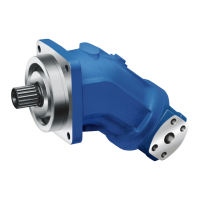
